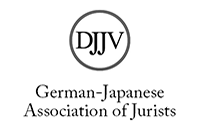Squeeze-out of Minority Shareholders. The Constitutionality Question
Abstract
The article discusses the constitutionality of a controlling shareholder’s right of squeeze-out in stock companies that was introduced by the 2014 Amendment to the Companies Act (Articles 179 et seq.). Shareholder rights in Japan should be understood as coming within the ambit of the constitutional protection of property rights as guaranteed under Article 29 of the Japanese Constitution of Japan. The Supreme Court has laid down the two principles applicable to constitutionality review of laws regulating property rights. First, a regulatory measure violates Article 29(2) of the Constitution only where the legislative purpose is clearly inconsistent with public welfare, or where the means of regulation are either unnecessary or irrational for the purpose of achieving regulatory objectives. Second, to determine whether regulation of property rights is consistent with the public welfare within the meaning of Article 29(2), the court will balance the purpose, necessity, and content of the regulatory measure with the type and nature of the property right to be restricted under the regulatory measure, and the extent of the restriction.
With regard to the first principle, the squeeze-out regime is seen as benefiting the ‘interests of society as a whole’ through benefiting the 100% parent (the erstwhile special controlling shareholder), thus the legislative purpose is qualified as compatible with the public welfare within the meaning of Article 29(2) of the Constitution. However, with respect to the second principle the author regards the means adopted under the current regime as inappropriate for achieving the regulatory objective, and therefore vulnerable to being challenged as irrational legislation in contravention of Article 29(2) of the Constitution. In contrast, the author points out that the Federal Constitutional Court of Germany in a decision of 2007 held that the German squeeze-out regime satisfied the principles of proportionality and full compensation at constitutional law and therefore did not infringe upon the constitutional protection of property rights as guaranteed under Article 14 of the Basic Law of the Federal Republic of Germany. He emphasizes, however, that the Japanese squeeze-out regime has major shortcomings in comparison to the German regulation.
First, the squeezed out minority shareholders bear the entire risk of the special controlling shareholder’s insolvency. By contrast, under German law, minority shareholders’ claims for payment against the special controlling shareholder are guaranteed by banks. This is a factor weighing in favor of finding Japan’s squeeze-out regime unconstitutional. Second, in contrast with German law, the Japanese regime does not provide for review of the adequacy of cash consideration by court-appointed special auditors. The absence of court-appointed valuation experts can therefore be a factor towards a finding of unconstitutionality in the context of squeeze-outs in unlisted companies. Third, there are no disclosure obligations imposed upon special controlling shareholders when exercising their right to squeeze-out and, fourth, the German squeeze-out regime, like others, does not stand alone; it is paired with a regime of minority shareholder’s sell out rights. Japan is unique amongst developed corporate law jurisdictions in providing for only a squeeze-out regime – a sign of a biased legislative program focused solely on the interests of major shareholders and failing to give sufficient regard to the interests of minority shareholders expropriated under the regime. As such, the author claims that its constitutionality is not beyond doubt.
(The Editors)






